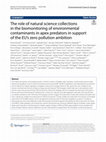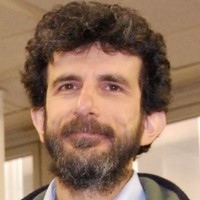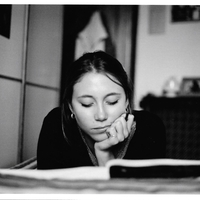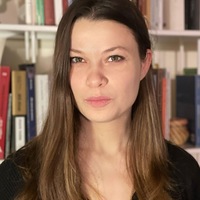Papers by Fausto Barbagli
Archivio per l’Antropologia e la Etnologia , 2024
This article focuses, for the first time, on an in depth and systematic study of the face casts p... more This article focuses, for the first time, on an in depth and systematic study of the face casts production of the Florentine anthropologist Nello Puccioni. The face casts are housed at the Museum of Anthropology and Ethnology of the University of Florence. Puccioni took the face casts in the course of his expeditions to Somalia (1924 and 1935) and Libya (1928 and 1929) during the Italian colonial occupation in Africa. This collection represents an emblematic case study of sensitive artefacts created, displayed and disseminated during fascism. This research represents an essential step in the well-needed process of decolonization of the Florentine museum and its contents
a. LV, n. 2. dicembre 2015, 2016
Archivio per l’Antropologia e la Etnologia - Vol. CLII, 2022
The Cook collection of the Museum of
Anthropology and Ethnology in Florence includes
objects belo... more The Cook collection of the Museum of
Anthropology and Ethnology in Florence includes
objects belonging to the cultures of Polynesia, Melanesia
and the North-West Coast of North America. The
importance of these artifacts is increasingly recognized
not only by curators, ethnologists and artists, but also
by historians. In this contribution we retrace the history
of its rediscovery in the 19th century, and the studies of
the 20th century which confirmed its attribution and
expanded knowledge. Finally, we reflect on the contents,
methods of communication and the future potential of
this collection.

Environmental Sciences Europe
The chemical industry is the leading sector in the EU in terms of added value. However, contamina... more The chemical industry is the leading sector in the EU in terms of added value. However, contaminants pose a major threat and significant costs to the environment and human health. While EU legislation and international conventions aim to reduce this threat, regulators struggle to assess and manage chemical risks, given the vast number of substances involved and the lack of data on exposure and hazards. The European Green Deal sets a ‘zero pollution ambition for a toxic free environment’ by 2050 and the EU Chemicals Strategy calls for increased monitoring of chemicals in the environment. Monitoring of contaminants in biota can, inter alia: provide regulators with early warning of bioaccumulation problems with chemicals of emerging concern; trigger risk assessment of persistent, bioaccumulative and toxic substances; enable risk assessment of chemical mixtures in biota; enable risk assessment of mixtures; and enable assessment of the effectiveness of risk management measures and of che...
Memorie della Società Entomologica Italiana, 2019
Si riproducono 68 ritratti, datati tra il 1860 e il 1883, riferibili per la massima parte ai prim... more Si riproducono 68 ritratti, datati tra il 1860 e il 1883, riferibili per la massima parte ai primi soci iscritti alla Società e pervenuti tra il 1869 (anno della fondazione) e gli anni ottanta dell’ottocento. Per ogni persona fotografata si forniscono sintetici dati biografici.
Museo di Storia Naturale dell’Università degli Studi di Firenze. Guida alla visita delle Sezioni, 2009
In copertina: Zemi, divinità caraibica. Particolare di un un vassoio cerimoniale dei Taino di San... more In copertina: Zemi, divinità caraibica. Particolare di un un vassoio cerimoniale dei Taino di Santo Domingo. Collezioni medicee
Among his numerous interests, the scholar Paolo Mantegazza (1831-1910) also devoted himself to ps... more Among his numerous interests, the scholar Paolo Mantegazza (1831-1910) also devoted himself to psychotropic plants, which he described in monographic contributions and in popular writings of a medical character, more specifically Quadri della natura umana: Feste ed ebbrezze and Elementi di igiene. Adopting the criteria of subdivision utilised by the scholar, the most widely used plants, foodstuffs and drinks are described, providing information about their botanical characteristics, their history, their chemical properties, their uses and the risks of abuse. They include, among others, sugar cane, coffee, tea, yerba mate, guarana, cocoa, tobacco, poppy, pepper, cinnamon, vanilla, cloves and absinthe.
Environmental Science and Pollution Research
Bulletin of the British Ornithologists Club, 1999
Environmental Science and Pollution Research, Aug 7, 2019

Atti dei Georgofili 2012, pp 930-936., 2012
I numerosi autori che si sono occupati dello studio e della valorizzazione dell'opera di Giovanni... more I numerosi autori che si sono occupati dello studio e della valorizzazione dell'opera di Giovanni Targioni Tozzetti hanno evidenziato il suo fondamen-tale contributo all'illustrazione della storia naturale e locale della Toscana dando enfasi ai suoi studi geologici, paleontologici e botanici. Poco o niente invece è stato scritto sul Giovanni Targioni Tozzetti zoologo, nonostante il suo apporto sia stato anche in questa materia senza dubbio significativo. Se si esclude la giovanile collaborazione alle Novelle scientifico letterarie (Lami 1740-1750), il suo esordio scientifico fu segnato, nel 1741, proprio da una pubblicazione a carattere zoologico intitolata Lettera all'illustrissimo sig. barone Gio. Batista de Bassand sopra una numerosissima specie di farfalle vedu-tasi in Firenze sulla metà di luglio 1741. Si tratta di un libretto di una trentina di pagine da cui ben traspaiono le sue competenze e il suo modo di procedere nell'analisi dei fenomeni. A determinarlo a prendere in mano la penna per illustrare e spiegare un curioso fenomeno entomologico erano state le richieste giuntegli da più parti, quando Firenze fu invasa da vere e proprie nuvole di insetti, comunemente indicati dal popolo come "farfalle", che si erano con-centrati sui ponti e sulle botteghe a ridosso dell'Arno. Quello che emerge dal suo scritto è un quadro di notizie molto amplio che deriva in parte anche da testimonianze diligentemente raccolte tra i pescatori e la gente comune e riorganizzate in forma critica e organica. È notevole il procedimento per gradi che il Targioni Tozzetti porta avanti iniziando con la descrizione degli insetti che sono immediatamente ricondotti a un'unica specie, ma nei quali riscontra un evidente dimorfismo sessuale. Particolare attenzione dedica all'esame microscopico che egli, sulla scia degli studi dell'o

Proceedings of the California Academy of Sciences, fourth series, vol 59, supplement I, p. 19-36, 2008
The Florence Natural History Museum was promoted in the 18 th century by the enlightened Grand Du... more The Florence Natural History Museum was promoted in the 18 th century by the enlightened Grand Duke Peter Leopold. Its opening to the public in 1775 represented an unprecedented event as, until then, natural history museums were viewed as places exclusively reserved for nobles and scholars. During its long history, many of the Museum staff have contributed to the exploration and scientific documentation of the Mediterranean. The Museum's sections, which house a large quantity of scientific material, collected from throughout the Mediterranean region, bear witness to the role played by the institution in exploring and expanding our knowledge of this interesting geographical area. The origin of the collections from the Mediterranean can be ascribed to two different sources. The first, constituted by material collected during several scientific institutional expeditions, focused on the study of peculiar sites largely to document their natural history; the second, the specimens, objects, and other items accumulated , donated or exchanged by private researchers. Although the latter were not collected by Museum staff as a result of their own explorations of the Mediterranean area, they are, nonetheless, significant inasmuch as they are the voucher materials upon which numerous chorologic and biogeographic studies have been based. The present work considers the contributions of each of the sections of the Natural History Museum of Florence University to the scientific exploration and understanding of the Mediterranean basin, with short accounts of the main personalities involved. Il Museo di Storia Naturale di Firenze nacque sulla scorta delle idee illuministe del XVIII seolo e fu voluto dal Granduca Pietro Leopoldo. La sua apertura al pubblico, nel 1775, costituì un evento senza precedenti nel panorama dei musei di storia naturale, fino ad allora considerati appan-naggio solo di nobili e studiosi. Durante la sua lunga storia, molti dei personaggi che hanno operato presso il Museo hanno contribuito all'esplorazione e all'illustrazione scientifica del Mediterraneo. Presso le sezioni del Museo si conservano abbondanti materiali scientifici, raccolti in varie parti del bacino del Mediterraneo che testimoniano il ruolo avuto dall'istituzione nella conoscenza di questa interessante area geografica. Se guardiamo all'origine delle raccolte e dei reperti provenienti dall'area mediterranea vedi-1
Archivio per l'Antropologia e la Etnologia, 2019
Elio Modigliani (1860-1932) is an emblematic figure of a scientific explorer from the last half o... more Elio Modigliani (1860-1932) is an emblematic figure of a scientific explorer from the last half of the 19th century. This study analyzes his collection of Indonesian artifacts conserved at the Museum of Anthropology and Ethnology of the University of Florence, focusing also on less known objects of various origins. Our research shows that he consistently used scientific collecting methods of the time in the field. Modigliani’s extensive network of collaboration shed light on his work and the cultural role of the Florentine Museum.
Rivista italiana di Ornitologia, 65: 77-78., 1995
Wild ibrid between Streptopelia turtur and Streptopelia decaocto collected in Italy for the first... more Wild ibrid between Streptopelia turtur and Streptopelia decaocto collected in Italy for the first time









Uploads
Papers by Fausto Barbagli
Anthropology and Ethnology in Florence includes
objects belonging to the cultures of Polynesia, Melanesia
and the North-West Coast of North America. The
importance of these artifacts is increasingly recognized
not only by curators, ethnologists and artists, but also
by historians. In this contribution we retrace the history
of its rediscovery in the 19th century, and the studies of
the 20th century which confirmed its attribution and
expanded knowledge. Finally, we reflect on the contents,
methods of communication and the future potential of
this collection.
Anthropology and Ethnology in Florence includes
objects belonging to the cultures of Polynesia, Melanesia
and the North-West Coast of North America. The
importance of these artifacts is increasingly recognized
not only by curators, ethnologists and artists, but also
by historians. In this contribution we retrace the history
of its rediscovery in the 19th century, and the studies of
the 20th century which confirmed its attribution and
expanded knowledge. Finally, we reflect on the contents,
methods of communication and the future potential of
this collection.
Esse si riferiscono principalmente al Livornese e al Pisano. Le antiche tenute di Tombolo e Coltano, ampi comprensori palustri oggi bonificati, risultavano aree di particolare interesse per l’estensore e rappresentano anche uno dei principali motivi di interesse attuale di questa fonte informativa, stante il mutato assetto territoriale e la scarsezza di dati sull’avifauna ivi presente in passato.
Le annotazioni, scritte fra il 1900 e il 1934, si sono rivelate generalmente esatte e puntuali, testimoniando la buona preparazione ornitologica del loro Autore.
L’antica firma di possesso, la presenza di un Ex-libris e alcuni fogli volanti conservati all’interno del libro permettono con certezza di attribuire le note a Francesco Ott.
Un accurato elenco di preparati tassidermici effettuati dal medesimo personaggio è aggiunto alle le chiose, per una migliore conoscenza storico-faunistica di importanti ambienti toscani ormai scomparsi.